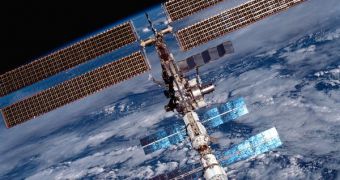On Tuesday, two satellites collided in orbit over Siberia, at an altitude of approximately 490 miles (790 kilometers), spilling debris all around the impact site. The Russian spacecraft involved in the crash was out of commission for a long time, while the American satellite was still operational. However, Iridium Satellite LLC, the company managing the craft, said that the incident only minimally affected its range of services, and that it would continue to provide high-quality services with its remaining infrastructure. The US Defense Department's Space Surveillance Network (SSN) is currently monitoring the debris field, in order to assess the dangers it poses to other satellites in orbit.
“This is the first time we've ever had two intact spacecraft accidentally run into each other. It was a bad day for both of them,” NASA's Orbital Debris Program Office chief scientist Nicholas Johnson, from the Johnson Space Center in Houston, Texas, told Space. He added that the new event, which took place at 11:55 am EST (0455 GMT), was the worst incident in Earth's orbit since 2007, when China tested its anti-satellite laser weapon, destroying one of its own weather-monitoring machines. The explosions left behind a huge cloud of debris, which even now poses a threat to other spacecraft.
“Within the next 30 days, Iridium expects to move one of its in-orbit spare satellites into the network constellation to permanently replace the lost satellite,” a statement released by Iridium said. The company added that the incident was a “very low probability event,” and promised to implement a “network solution” by Friday. Iridium operates an impressive fleet of 66 satellites in orbit, and provides mobile voice and data communication services worldwide.
SSN representatives argue that they are currently tracking down a large number of fragments, and that their threat level will be shortly assessed. “We're tracking more than 500 pieces of debris which pose an additional risk to satellites,” US Strategic Command spokesman US Navy Lt. Charlie Drey shared. The Strategic Command is in charge with overseeing the SSN and its actions, as well as with monitoring orbital activities recorded for as many countries as possible. According to Drey, more than 18,000 individual objects are tracked by Americans in orbit each day, all results of human actions.
Johnson pointed out that the threat to the International Space Station (ISS) was minimal, as the structure orbited our planet at an altitude of about 220 miles (354 kilometers), well below the impact point. It's only possible that small pieces of space junk will touch the space station, but the dangers they pose are negligible. “We believe that the increased risk above the normal every day background risk is very, very small,” he concluded.

 14 DAY TRIAL //
14 DAY TRIAL //